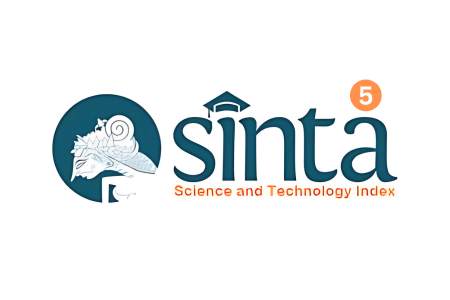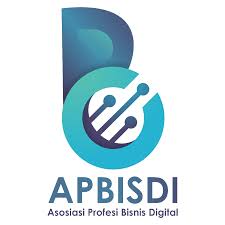The Effect of Digital Job Resources on Innovative Work Behavior Through Digital Engagement in Employees of PT ABC (Persero) East Java Distribution Unit
Keywords:
Digital Job Resources, Digital engagement, innovative work behavior, Teori job demands-resourcesAbstract
This study explores the effect of digital job resources on innovative work behavior, with digital engagement serving as a mediating factor, among employees of PT ABC (Persero) East Java Distribution Unit. A quantitative approach was utilized, involving 60 participants. To analyze the data, the Partial Least Squares Structural Equation Modeling approach was applied, assisted by SmartPLS 4 and SPSS 4.0 software. The results indicate that: (1) Digital job resources do not exert a direct influence on innovative work behavior; (2) however, they significantly promote digital engagement; (3) digital engagement, in turn, has a positive impact on innovative work behavior; and (4) it serves as a significant mediator in the relationship between digital job resources and innovative work behavior.
Downloads
References
(Persero), P. P. (2021). PLN Mobile: Solusi Digital untuk Meningkatkan Pengalaman Pelanggan. Diambil kembali dari https://www.antaranews.com/berita/4209936/pln-tingkatkan-fitur-dan-layanan-di-aplikasi-pln-mobile
Areros, W. A. (2023). Pelatihan dan Kompensasi Kaitannya Dengan Innovative Work Behavior PT Pos Indonesia (Persero) Kantor Cabang Utama Manado. Productivity, 4(2). 249-255.
Aris, A. R. (2019). Training and development on innovative work behavior among public organization managers: The mediating effect of intrapreneurial competencies. International Journal of Engineering and Advanced Technology (IJEAT), 8(5), 2769–2775.
Arun Kumar, P. N. (2024). Empowering employees, empowering the environment: green HRM’s journey to happiness, resilience and feedback seeking. Journal of Hospitality and Tourism Insights, 7(2), 1130-1147. doi:https://doi.org/10.1108/JHTI-11-2023-0800
Azevedo, A. &. (2019). A new training program in developing cultural intelligence can also improve innovative work behavior and resilience: A longitudinal pilot study of graduate students and professional employees. The International Journal of Management Education, 17(3), 100303.
Bakker, A. B. (2007, 04 03). The Job Demands‐Resources model: state of the art. Journal of Managerial Psychology, 22(3), 309-328. doi:10.1108/02683940710733115
Bicara, S. (2022). Pelatihan MC & Moderator Training untuk PLN UID Jawa Timur. Diambil kembali dari https://sinergibicara.com/pelatihan-mc-moderator-training-pln-uid-jatim
Bicara, S. (2022). Workshop Crafting Impactful Presentation untuk PLN UID Jawa Timur. Diambil kembali dari https://sinergibicara.com/workshop-crafting-impactful-presentation-pln-uid-jatim.
Chikazhe, L. a. (2022). Promotion of perceived service quality through employee training and empowerment: the mediating role of employee motivation and internal communication. Services Marketing Quarterly, Vol. 43 No. 3, pp., 294-311. doi: 10.1080/15332969.2021.1992560
Chin, W. W. (1998). The partial least squares approach for structural equation modeling. Dalam Modern methods for business research, Macoulides, G. A. (hal. 295-336). Lawrence Erlbaum Associates.
Chiu, T. C. (2015). The impact of training investment and employee communication on innovation: The mediation of employee participation. Third International Conference on Robot, Vision and Signal Processing (RVSP), 90-104. doi:https://doi.org/10.1109/RVSP.2015.73
Colladon, F. S.-C. (2021). From words to connections: word use similarity as an honest signal conducive to employees’ digital communication. Journal of Information Science, Vol. 47 No. 6, pp., 699-711. doi:10.1177/0165551520929931
Daskalakis, S. &. (2008). Evaluating the impact of a service-oriented framework for healthcare interoperability (In S. K. Anderson, G. O. Klein, S. Schulz, J. Aarts, & M. C. Mazzoleni, Eds.). Dalam eHealth beyond the horizon - get IT there: Proceedings of MIE2008 (Studies in Health Technology and Informatics) (hal. 285-290). IOS Press.
Demerouti, E. B. (2001). The Job Demands-Resources model of burnout. Journal of Applied Psychology,(86)3.
Dixit, A. &. (2021). Role of JD-R model in upticking innovative work behaviour among higher education faculty. RAUSP Management Journal, 56(2), 156-169. doi:https://doi.org/10.1108/RAUSP-03-2020-0060
Drummond, C. O. (2020). Digital engagement strategies and tactics in social media marketing. European Journal of Marketing, 54(6), 1247-1280. doi:10.1108/EJM-02-2019-0183
Erhan, T. U. (2022). From conventional to digital leadership: exploring digitalization of leadership and innovative work behavior. Management Research Review, Vol. 45 No. 11, pp., 1524-1543. doi:https://doi.org/10.1108/MRR-05-2021-0338
Estefan, A. I. (2024). Digital training for micro-entrepreneurs: experimental evidence from Guatemala. The World Bank Economic Review, Vol. 38 No. 2, pp., 394-421. doi:10.1093/wber/lhad029
Ferdinand, A. (2006). Metode penelitian manajemen (2nd ed.). Badan Penerbit Universitas Diponegoro.
Forum, W. E. (2020). Digital Transformation: Powering the Great Reset. Diambil kembali dari https://www3.weforum.org/docs/WEF_Digital_Transformation_Powering_the_Great_Reset_2020.pdf
Forum, W. E. (2023). Digital Transformation: Prioritizing Investment in a Downturn. Diambil kembali dari https://www.weforum.org/stories/2023/01/davos23-digital-transformation-investment-priority-downturn/ .
Garson, G. D. (2016). Partial least squares: Regression & structural equation models (2016th ed.). G. David Garson and Statistical Associates Publishing.
Ghozali, I. &. (2015). Partial least squares: Konsep, teknik dan aplikasi menggunakan smartPLS 3.0 (untuk penelitian empiris) (2nd ed.). Badan Penerbit Universitas Diponegoro.
Hair, J. F. (2014). A primer on partial least squares structural equation modeling (PLS-SEM). Sage Publications.
Henseler, J. R. (2012). Using partial least squares path modeling in international advertising research: Basic concepts and recent issues. In Okzaki, S. Dalam Handbook of research on international advertising (hal. 252-276). Springer.
Höck, M. &. (2006). Strategic networks in the software industry: An empirical analysis of the value continuum. IFSAM VIIIth World Congress. Berlin.
ITWorks. (2022). PLN Borong 5 Penghargaan Digital Innovation & Achievement Award 2022. Diambil kembali dari https://news.detik.com/berita/d-6359176/pln-borong-5-penghargaan-digital-innovation-achievement-award-2022
Jatim, K. (2024). PLN Nusantara Power Siapkan NuCC untuk Optimalkan Pengelolaan Pembangkit EBT. Diambil kembali dari https://kominfo.jatimprov.go.id/berita/pln-nusantara-power-siapkan-nucc-untuk-optimalkan-pengelolaan-pembangkit-ebt
Jatim, K. (2024). PLN UID Jatim Implementasikan Sistem Manajemen Anti Penyuapan untuk Mendorong Budaya Anti Korupsi. Diambil kembali dari https://kominfo.jatimprov.go.id/berita/pln-ajak-mitra-terapkan-budaya-safety-action-dan-anti-penyuapan
Jesuthasan, R. (2017). HR’s new role: rethinking and enabling digital engagement. Strategic HR Review, Vol. 16 No. 2, pp., 60-65. doi:10.1108/SHR-01-2017-0009
Jia, K. Z. (2022). The linkage between ethical leadership, well-being, work engagement, and innovative work behavior: the empirical evidence from the higher education sector of China. International journal of environmental research and public health, 19(9), 5414.
Jong, J. D. (2007). How leaders influence employees’. European Journal of Innovation Management, 10(1), 41-64. doi: https://doi.org/http://dx.doi.org/10.1108/14601060710720546
Jong, J. D. (2010). Measuring innovative work behaviour. Creativity and Innovation Management, 19(1), 23-26. doi: https://doi.org/10.1111/j.1467-8691.2010.00547.x
Kamalia, F. L. (2022). Pengaruh Iklim Organisasi Dan Komunikasi Digital Terhadap Kinerja Karyawan Dengan Inovasi Kerja Sebagai Variabel Intervening (Studi pada Karyawan Perhotelan Kawasan Bandungan). Diponegoro Journal of Management, 11(4).
Klik24.News. (2023). PT PLN (Persero) Raih 779 Penghargaan Transformasi dan Inovasi Digitalisasi. Diambil kembali dari https://klik24.news/pln-raih-779-penghargaan-transformasi-digital
Koroglu, S. a. (2022). The mediating effect of work engagement on innovative work behavior and the role of psychological well-being in the job demands–resources (JD-R) model. Asia-Pacific Journal of Business Administration, Vol. 14 No. 1, pp, 124-144. doi: 10.1108/APJBA-09-2020-0326
Kumar, A. N. (2024). Empowering employees, empowering the environment: green HRM’s journey to happiness, resilience and feedback seeking. Journal of Hospitality and Tourism Insights, Vol. 7 No. 2, pp., 1130-1147. doi: 10.1108/JHTI-11-2023-0800
Kwon, K. a. (2020). An integrative literature review of employee engagement and innovative behavior: revisiting the JD-R model. Human Resource Management Review, Vol. 30 No.2,, 100704, Article 2,. doi:https://doi.org/10.1016/j.hrmr.2019.100704
Memon, M. S. (2016). The link between training satisfaction, work engagement and turnover intention. European Journal of Training and Development. Vol. 40 No. 6, pp., 407-429. doi: 10.1108/ejtd-10-2015-0077.
Memon, M. S. (2020). “Satisfaction matters: the relationships between HRM practices, work engagement and turnover intention. International Journal of Manpower, Vol. 42 No. 1, pp., 21-50. doi:10.1108/ijm-04-2018-0127.
Memon, M. T. (2023). Addressing common method bias, operationalization, sampling, and data collection issues in quantitative research: review and recommendations. Journal of Applied Structural Equation Modeling, Vol. 7 No. 2, pp., 1-14. doi: 10.47263/jasem.7(2)01
Messmann, G. S. (2017). Joint effects of job demands and job resources on vocational teachers’ innovative work behavior. Personnel Review, Vol. 46 No. 8, pp., 1948-1961. doi:10.1108/PR-03-2016-0053
Mineral, K. E. (2023). Laporan Kinerja PT PLN (Persero) dalam Inovasi dan Transformasi Digital. Diambil kembali dari https://www.esdm.go.id
Møller, T. P. (2022). Four ways digital leaders are accelerating their innovation strategy – sponsor content from ey-parthenon. Diambil kembali dari Harvard Business Review, available at: https://hbr.org/sponsored/2022/06/four-ways-digital-leaders-are-accelerating-their-innovation-strategy
Na-Nan, K. R. (2019). Validation of a digital intelligence quotient questionnaire for employees of small and medium-sized Thai enterprises using exploratory and confirmatory factor analysis. Kybernetes, 49(5), 1465-1483. doi:10.1108/K-01-2019-0053
Ngugi, M. M. (2023). Mode of communication and employee engagement in technical training institutions in Kenya. American Journal of Communication, Vol. 5 No. 1, pp., 1-16. doi: 10.47672/ajc.1322
Nguyen, M. T. (2024). Encouraging employees’ innovative behavior via the mediating effect of work engagement and the moderating effect of their proactive personality: the case of Generation Z in Vietnam. Cogent Business & Management, 11(1), 2301162.
Nguyen, T. N. (2019). Knowledge sharing and innovative work behavior: the case of Vietnam. Uncertain Supply Chain Management, Vol. 7, pp., 619-634. doi: 10.5267/j.uscm.2019.5.001
Odoardi, C. C. (2022). HR training practices and innovative work behaviour: a moderated mediation model. International Journal of Human Resources Development and Management, 22(1-2), 1-18.
Pokrovskaia, N. L. (2021). Digital Communication Tools and Knowledge Creation Processes for Enriched Intellectual Outcome—Experience of Short-Term E-Learning Courses during Pandemic. Future Internet, Vol. 13 No. 2, p., 43. doi: 10.3390/fi13020043
Pukkeeree, P. N.-N. (2020). Effect of attainment value and positive thinking as moderators of employee engagement and innovative work behaviour. Journal of Open Innovation: Technology, Market, and Complexity, 6(3), 69.
Rahmi, A. A. (2024). Psychological Capital and Innovative Work Behavior with Engagement and Job Crafting. Indonesian Journal of Innovation Studies, 25(4),, 10-21070.
Saeed AlShamsi, S. B. (2023). The relationship between curiosity and innovative work behavior in the aviation industry: the mediating effect of work engagement. International Journal of Organizational Analysis, Vol. 31 No. 7, pp. , 3119-3136. doi:https://doi.org/10.1108/IJOA-05-2022-3267
Sari, F. A. (2022). The Effectiveness of Training Methodology on Innovative Work Behavior and Government Employee Performance during the Covid-19 Pandemic: The Role of Soft Skill and Emotional Intelligence. Jurnal Manajemen Teori Dan Terapan, 15(1).
Sari, K. D. (2024). Pengaruh digital leadership dan work engagement pada innovative work behavior pada gen z Jawa Tengah . Perwira Journal of Economics & Business, 4(2),, 246-259.
Snogren, M. E. (2024). Impacts on oral health attitude and knowledge after completing a digital training module among Swedish healthcare professionals working with older adults. BMC Health Services Research, Vol. 24 No. 1, p, 174. doi: 10.1186/s12913-024-10639-3
Tenenhaus, M. V.-M. (2005). PLS path modeling. Computational Statistics & Data Analysis, 26(2), 159-205.
Tien Thanh, P. &. (2024). Linking training and development to employees’ attitudes and behaviors: the mediating role of engagement. European Journal of Training and Development, 48(3/4), 357-374. doi:https://doi.org/10.1108/EJTD-10-2022-0105
Turgut, E. &. (2013). Çalışanların yenilikçi davranışları üzerinde sosyal sermaye ve yenilikçi iklimin rolü: Sağlık sektöründe bir araştırma. KHO Bilim Dergisi, 23(2), 101-124.
U Sekaran, R. B. (2016). Sekaran, U., & Bougie, R. (2016). Research Methods for Business: A Skill- Building Approach (Seventh). John Wiley & Sons.
Uppathampracha, R. &. (2022). Leading for innovation: Self-efficacy and work engagement as sequential mediation relating ethical leadership and innovative work behavior. Behavioral Sciences, 12(8), 266.
Yandong, L. &. (2024). Factors Influencing Employee Engagement and Innovative Work Behavior--A Case Study of Hi-Tech Company in China. Educational Administration: Theory and Practice, 30(5), 12408-12422.
Zia, A. M. (2024). Digital job resources, digital engagement, digital leadership, and innovative work behaviour: A serial mediation model. European Journal of Innovation Management.
Downloads
Published
How to Cite
Issue
Section
License
Copyright (c) 2025 Journal of Digital Business and Innovation Management

This work is licensed under a Creative Commons Attribution-NonCommercial 4.0 International License.
 Abstract views: 117
,
Abstract views: 117
, PDF Downloads: 122
PDF Downloads: 122






